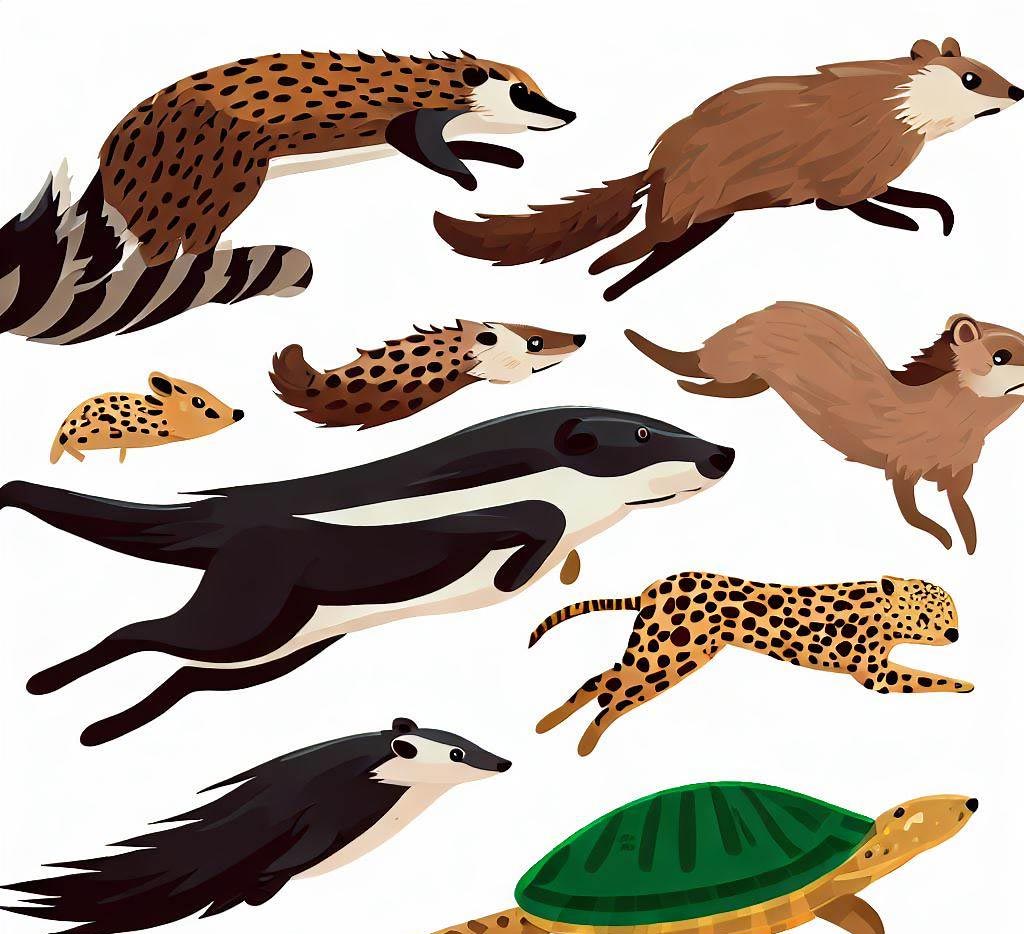
Unveiling Speed: The Science of World's Fastest Animals
Introduction
Have you ever wondered how the cheetah earned its title as the fastest land animal, or what makes the peregrine falcon such a lethal predator in the skies? The answers lie in a captivating intersection of biology, physiology, and evolution. This article invites you, whether you are an animal enthusiast, a student studying biology or zoology, a nature lover, or a scientist in a related field, to dive into the fascinating world of speed in nature. We'll explore the science behind the world's fastest animals and their unique adaptations that enable them to reach such breathtaking velocities.
The Speed Champions in Nature's Arena
Fastest on Land: The Cheetah
The cheetah reigns supreme as the fastest animal on land, capable of accelerating from 0 to 60 miles per hour in just a few seconds. This impressive speed is not just a product of its powerful hind legs but also a result of a collection of other biological adaptations.
Biological Adaptations in the Cheetah
Cheetahs are finely tuned speed machines, their bodies perfectly adapted for a life spent in pursuit of prey on the African savannas. A few notable features that contribute to their unmatched speed include:
- Aerodynamic Body: The cheetah's slender, streamlined body reduces air resistance when sprinting at top speed.
- Large Nasal Passages: Expanded nasal passages allow for increased oxygen intake, vital to fuel the cheetah's muscles during high-speed chases.
- Flexible Spine: The cheetah's spine works like a spring for its powerful leg muscles, allowing it to take giant strides when running at full speed.
- Adrenal Glands: Large adrenal glands produce adrenaline, preparing the cheetah's body for the 'fight or flight' response.
Fastest in the Air: The Peregrine Falcon
When it comes to the skies, the peregrine falcon dominates the competition. Known for its spectacular hunting stoop, this bird of prey can reach speeds of over 240 miles per hour.
Physiology of the Peregrine Falcon
A peregrine falcon's physiology is a testament to nature's ingenuity. Every part of its body is designed to maximize speed, agility, and hunting proficiency.
- Aerodynamic Shape: Peregrine falcons have pointed wings and a streamlined body shape that minimizes air resistance and enhances their speed.
- Keen Eyesight: Their exceptional eyesight enables them to spot and track prey from great heights.
- Specialized Respiratory System: They have a unique 'baffle' system in their nostrils, slowing down the air that rushes in during high-speed dives, thus preventing their lungs from bursting.
Fastest in Water: The Sailfish
The sailfish, capable of reaching speeds up to 68 miles per hour, is the aquatic world's speed champion.
Biological Adaptations in the Sailfish
Like the cheetah and the peregrine falcon, the sailfish also has several unique adaptations that contribute to its incredible speed:
- Streamlined Body: Sailfish have a slender, torpedo-shaped body that reduces drag in water, allowing them to swim at high speeds.
- Large Crescent-shaped Tail: This provides propulsion, pushing the sailfish forward in water.
- Bill: The sailfish's long bill is thought to aid in slashing at schools of fish, stunning its prey.
How Do These Fastest Animals Achieve Their Speed?
Whether on land, in the air, or underwater, these animals rely on a combination of skeletal structure, muscle strength, and metabolic adaptations to achieve their remarkable speed.
Skeletal Structure
In all these animals, the skeleton plays a critical role in facilitating their high-speed pursuits. For instance, the cheetah's flexible spine allows it to stretch out while running, effectively increasing its stride length. Similarly, the rigid, lightweight bones of the peregrine falcon facilitate high-speed flight, while the streamlined skeletal structure of the sailfish contributes to its swift movements underwater.
Muscle Strength
Fast movement requires robust and efficient muscles. The cheetah's powerful hind limb muscles generate a tremendous amount of force, propelling it forward at astonishing speeds. The peregrine falcon's wing muscles, in comparison, are not just strong but also incredibly endurance-oriented, enabling it to maintain its strenuous high-speed dives. The sailfish, on the other hand, has a dense concentration of white muscle tissue, which provides bursts of speed when chasing down prey.
Metabolism
High-speed chases are energy-intensive, and so these animals have adapted metabolically as well. Cheetahs, for instance, possess a large liver and adrenal glands to handle the energy demands and stress of a high-speed chase, respectively. The peregrine falcon's high metabolic rate enables rapid energy production during flight, and the sailfish's efficient circulatory system ensures a steady supply of nutrients and oxygen to its working muscles.
Evolution of Speed: Beyond Just Fast
Speed in the animal kingdom is not solely about being the fastest. It is also about survival. Evolutionary pressures such as predation, competition for mates, and environmental changes have driven the development of these incredible speed capacities.
Cheetahs evolved to be fast because their survival depends on it. Their speed allows them to catch agile prey and outcompete other predators. Similarly, the peregrine falcon's breathtaking dives make it an efficient hunter in the sky. As for the sailfish, speed is crucial for capturing prey and evading predators.
However, these adaptations for speed often come with trade-offs. For instance, while the cheetah's slender body is perfect for high-speed pursuits, it lacks the brute strength seen in other big cats, making it a less effective fighter when it comes to direct confrontations.
Conclusion
The world's fastest animals are indeed marvels of nature. Through an intricate web of biological and physiological adaptations, they have fine-tuned their bodies to become the epitome of speed in their respective domains. Yet, as we've learned, speed is not merely about crossing a finish line first. It's about survival and evolutionary advantage. As we continue to explore and understand these speedy species, we gain a deeper appreciation for the complexity and beauty of life on Earth.
Animal Science




